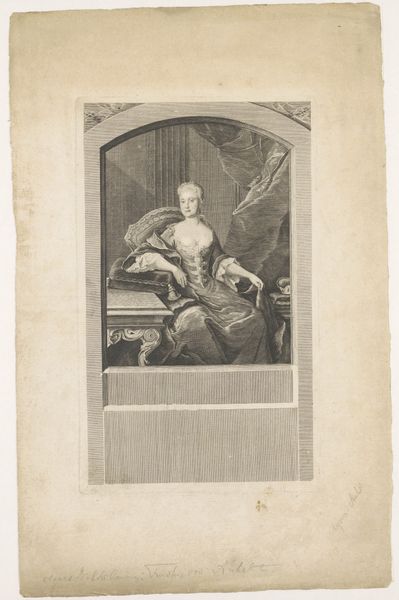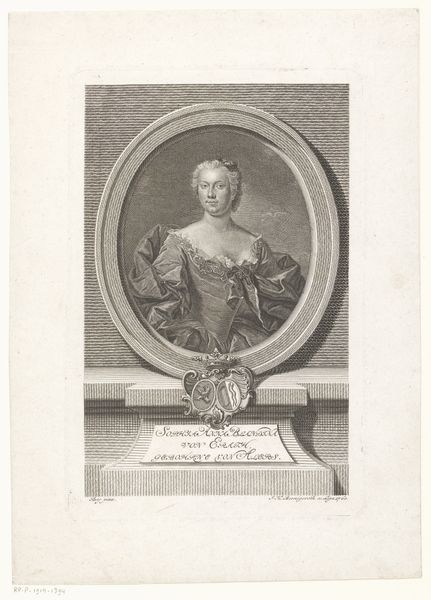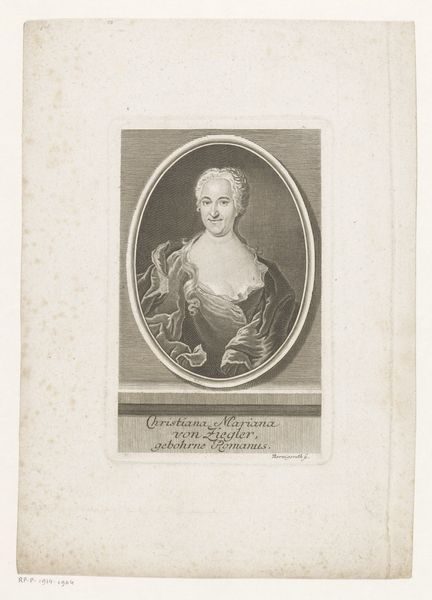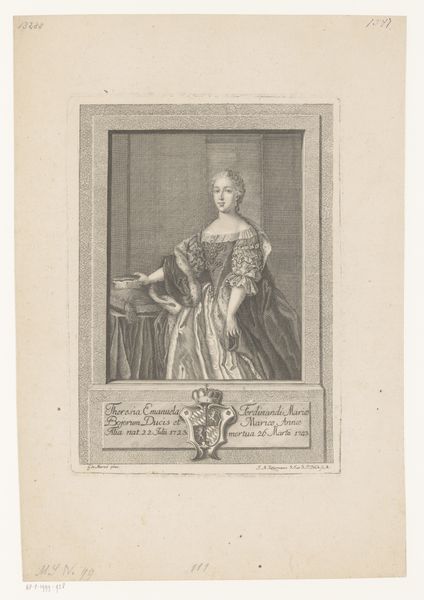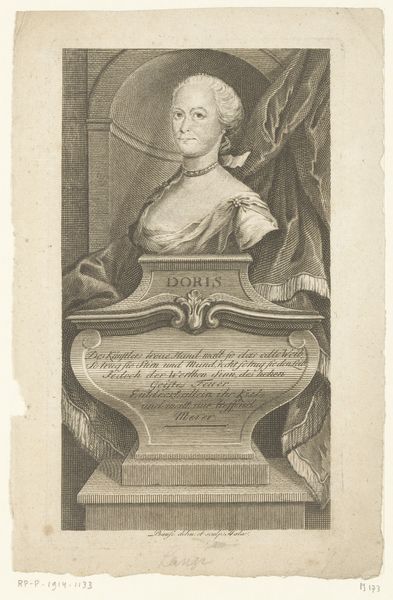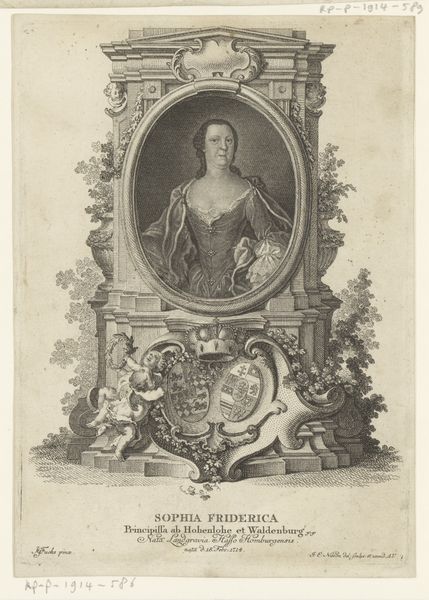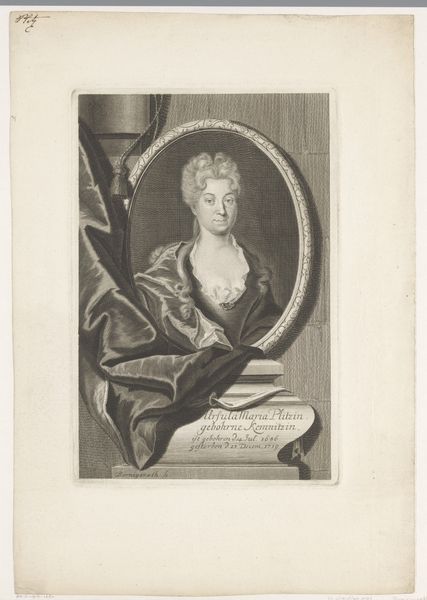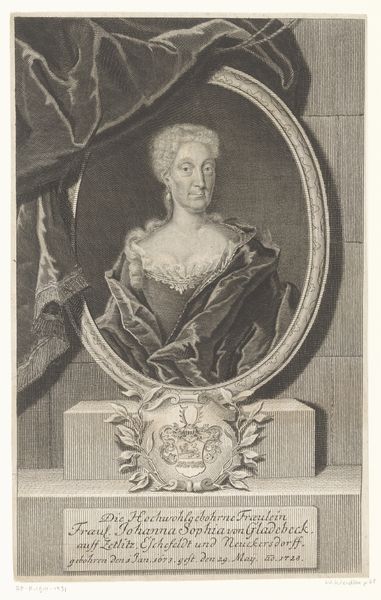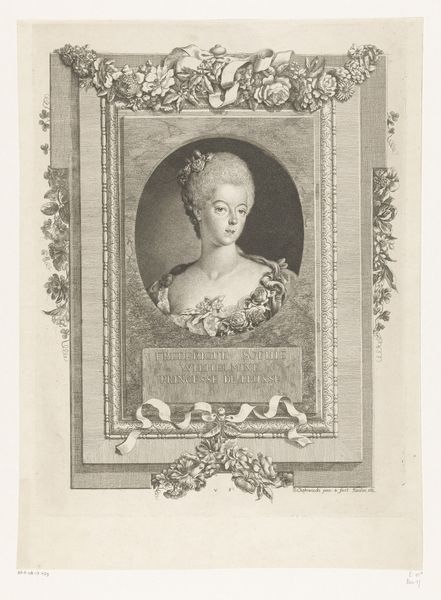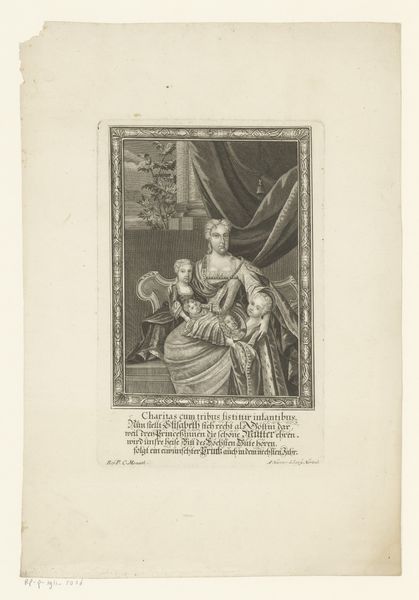
print, engraving
#
portrait
#
baroque
# print
#
old engraving style
#
history-painting
#
engraving
Dimensions: height 294 mm, width 178 mm
Copyright: Rijks Museum: Open Domain
Editor: This is Gottlieb Leberecht Crusius' "Portret van Agnes Wilhelmine Fürstin von Anhalt," created in 1757. It's a print, an engraving. The lady in the portrait seems so self-possessed and dignified, and I am intrigued by the way she is framed. What's your read on this piece? Curator: It whispers stories of power and presentation, doesn't it? The frame itself...it's almost theatrical. Think of it as a window not just into her life, but her constructed persona. Do you see how the textures play out, the light catching folds of her dress, the drape behind her? It is almost like you can feel the heavy weight of silk. How might these choices reflect Baroque sensibilities? Editor: I guess, there’s a lot of ornamentation around the image, in the frame and in the details of her dress, which create a rich feeling to the image. I can see the theatrical part, and I noticed there are words under the portrait as if she were a celebrated actress in a play. Curator: Exactly! Engravings like these democratized access to portraits of the elite, making them like early celebrity posters, and feeding a public hunger for images of the aristocracy. Doesn't it make you wonder about the role of prints and representation, even today? What do we choose to immortalize, and why? Editor: Definitely food for thought. It makes me realize that portraits were as much about propaganda as about capturing someone's likeness. It has a strong presence for something that isn’t painted but an engraving. Thanks for your explanation of this artwork. Curator: It was my pleasure, too! Art always invites such captivating dialogues, doesn't it? Keep those insightful questions coming!
Comments
No comments
Be the first to comment and join the conversation on the ultimate creative platform.


